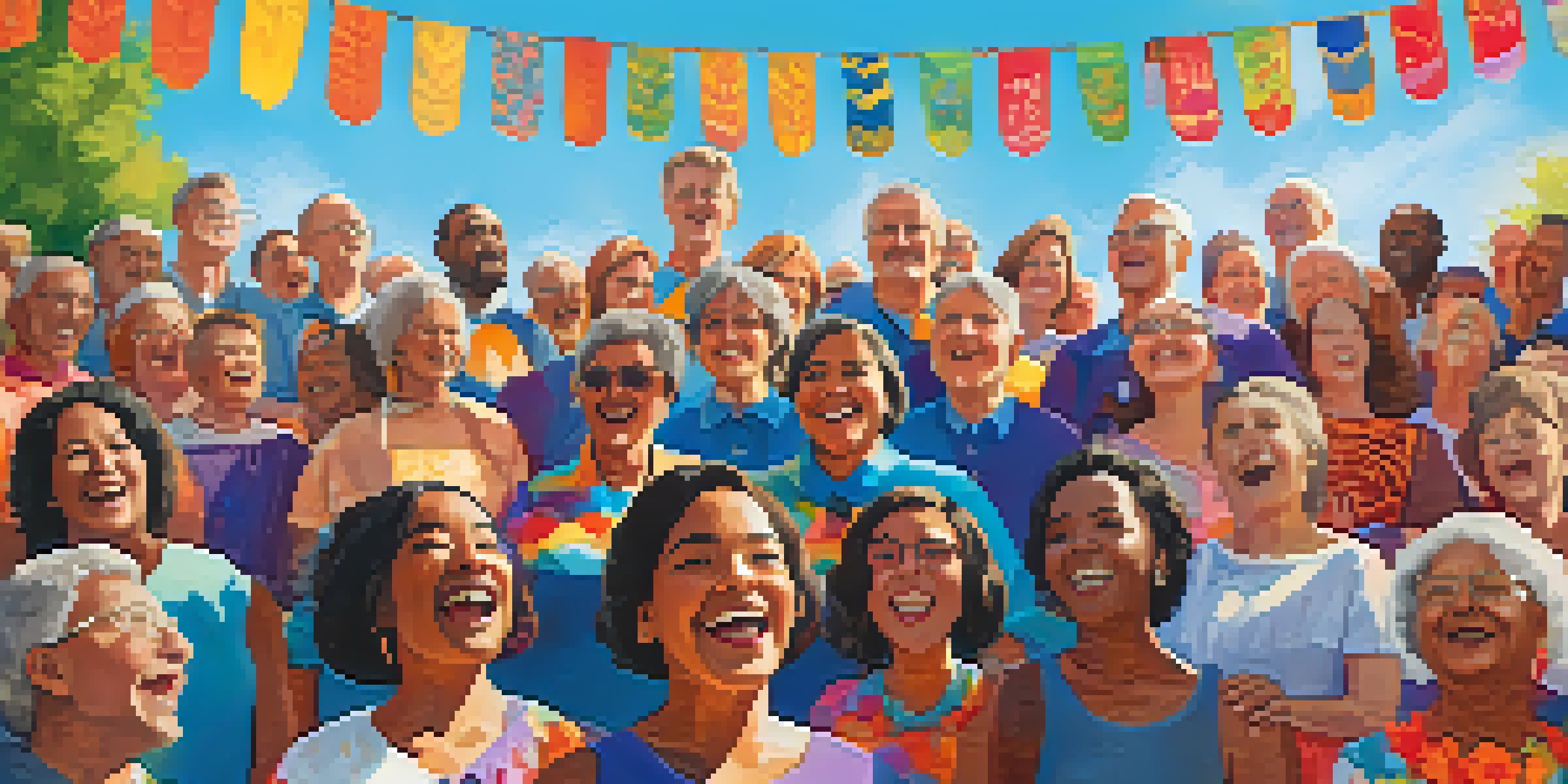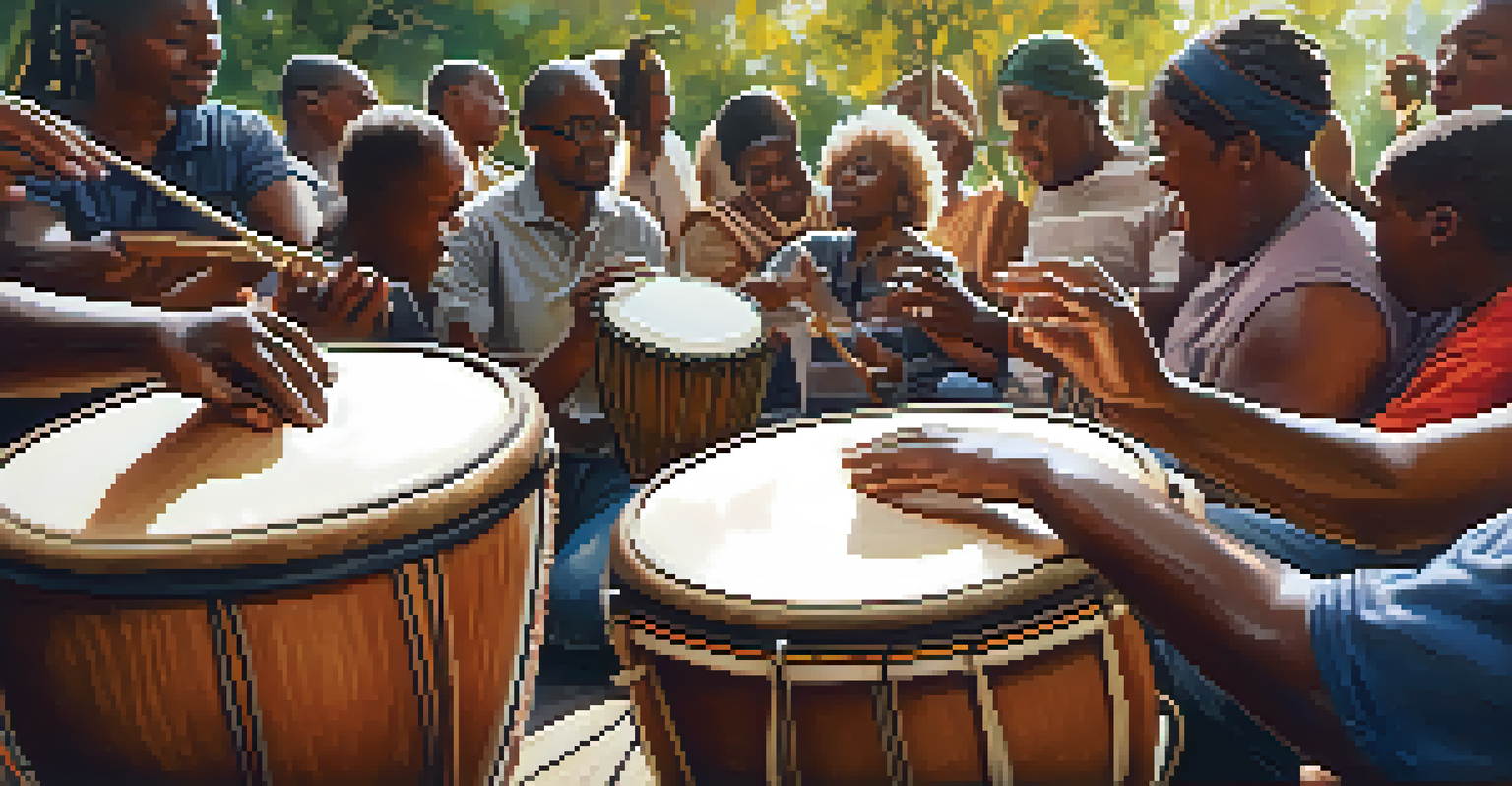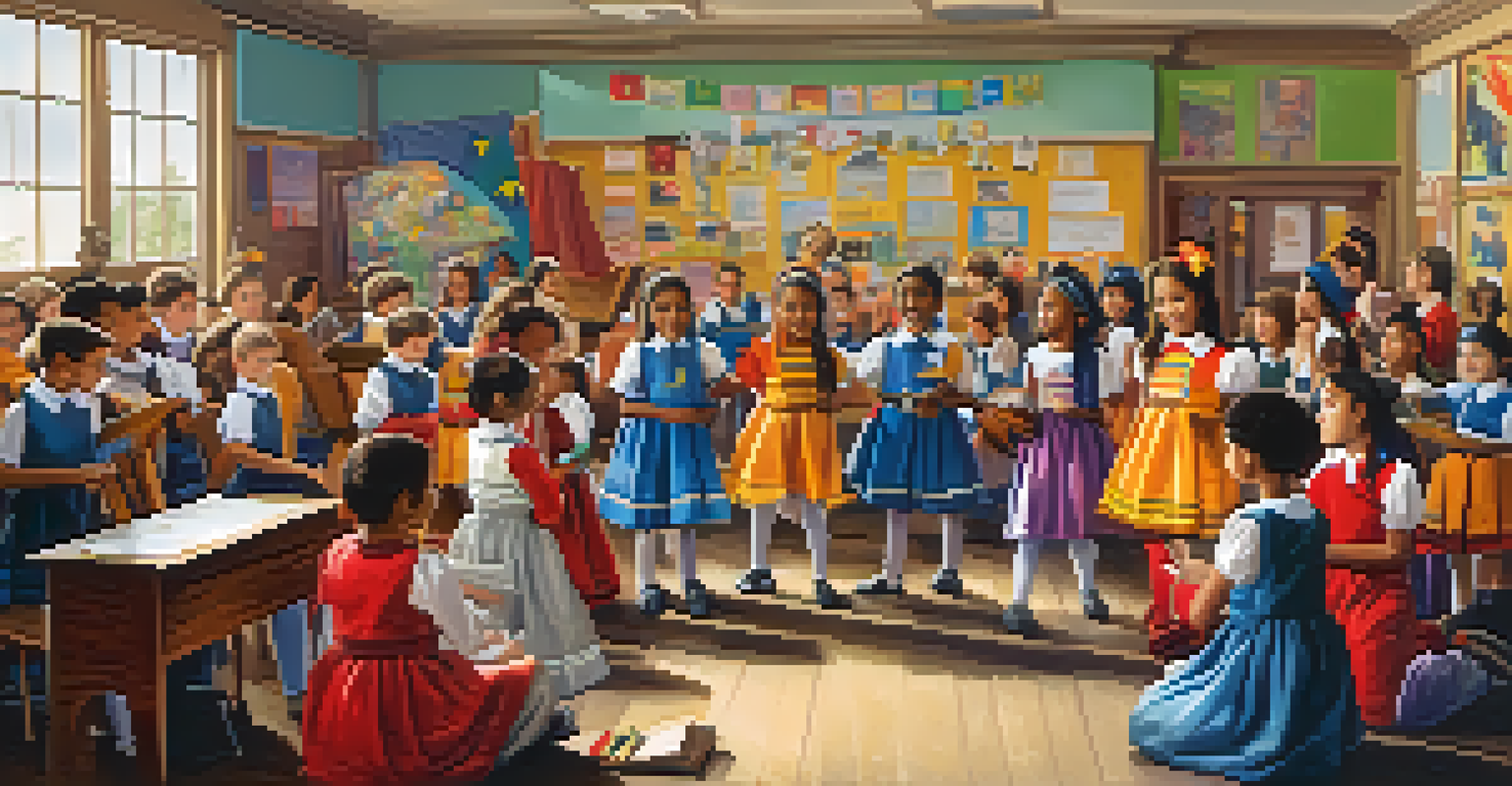Community Chords: Building Resilience Through Group Music

Understanding the Power of Music in Community Building
Music has an incredible ability to bring people together, transcending language and cultural barriers. When individuals come together to create music, they form a bond that can lead to deeper connections and understanding. This collective experience is not just about the notes played but also about the emotions shared, creating a sense of belonging within a community.
Music is the universal language of mankind.
For instance, think about a local choir where diverse individuals unite to sing. Each person brings their unique voice, yet together they create something harmonious and beautiful. This shared experience fosters resilience as members support one another, both musically and personally, fortifying the community against challenges.
Moreover, music can serve as a powerful tool for expression, allowing individuals to share their stories and struggles. When communities engage in music-making, they create a safe space for vulnerability, which is vital for building trust and resilience among members.
How Group Music Activities Foster Emotional Resilience
Participating in group music activities can significantly enhance emotional resilience. When individuals collaborate to create music, they learn to navigate challenges together, promoting teamwork and mutual support. This shared journey can help individuals cope with stress and build a stronger emotional foundation.

A great example of this is community drum circles, where participants express themselves rhythmically while creating a sense of unity. Engaging in such activities allows individuals to release pent-up emotions, reducing feelings of isolation and anxiety. The power of rhythm and beat brings people together in a way that words sometimes cannot.
Music Strengthens Community Bonds
Music fosters deep connections among individuals, promoting understanding and a sense of belonging within a community.
In these settings, members often find that they are not alone in their struggles. Sharing the experience of creating music can inspire hope and encourage people to face their difficulties together, reinforcing the idea that resilience is built through community support.
Creating Safe Spaces Through Collective Music Experiences
Safe spaces are essential for nurturing creativity and personal growth. Group music activities can create these environments, allowing individuals to express themselves without judgment. This sense of safety encourages participants to explore their emotions freely, which is crucial for resilience.
Where words fail, music speaks.
Consider a songwriting workshop where participants share personal stories through lyrics. The supportive atmosphere allows individuals to be vulnerable while fostering deep connections with others. This shared journey in creativity cultivates empathy, as participants learn to understand and appreciate each other's experiences.
Ultimately, these safe spaces promote a sense of belonging that is vital for emotional health. When people feel accepted and valued, they are more likely to take risks and embrace challenges, strengthening their resilience in the process.
Music as a Tool for Healing and Recovery in Communities
Music has long been recognized for its healing properties, particularly in times of crisis. Community music initiatives can provide a platform for collective healing, helping individuals cope with trauma and loss. The act of making music together can be a therapeutic experience that promotes recovery and resilience.
For example, after natural disasters, communities often come together to create music as a form of collective expression and healing. These musical gatherings serve as a reminder of shared experiences and provide emotional support to those affected. The power of music can transform grief into hope and connection.
Group Music Activities Build Resilience
Participating in collaborative music-making enhances emotional resilience through shared experiences and support.
Moreover, community music programs can facilitate relationships with mental health professionals, offering workshops and support alongside music-making. This holistic approach to recovery emphasizes the importance of both community and creative expression in the healing process.
The Role of Diverse Musical Genres in Community Resilience
Diversity in musical genres can enrich community music-making experiences. Different styles of music bring unique cultural backgrounds and traditions, fostering inclusivity and mutual respect among participants. This diversity can enhance resilience by promoting understanding and appreciation of varied perspectives.
For instance, a community festival that celebrates various musical styles—from jazz to folk—can attract a wide range of participants. As people share their unique sounds and stories, they create a vibrant tapestry of creativity that unites the community. This cross-cultural exchange strengthens bonds and builds resilience through shared joy and understanding.
Additionally, exploring different genres can encourage individuals to step outside their comfort zones. This willingness to experiment and collaborate fosters adaptability, an essential trait for resilience in the face of adversity.
Building Lifelong Connections Through Music Collaboration
Collaborative music-making often leads to lasting friendships and networks within communities. When individuals work together to create something beautiful, they form connections that can extend beyond the music itself. These relationships become a vital support system, enhancing personal and collective resilience.
Imagine a group of musicians who started as strangers but became friends through weekly jam sessions. Over time, their shared passion for music cultivates a strong bond that can help them through life's ups and downs. This sense of camaraderie is invaluable, providing emotional support when facing challenges.
Diversity in Music Enriches Communities
Embracing diverse musical genres fosters inclusivity and mutual respect, strengthening community resilience.
Furthermore, these connections can lead to new opportunities for collaboration and creativity, enriching the community's cultural landscape. As individuals support one another in their musical journeys, they also contribute to a resilient and vibrant community.
Encouraging Future Generations to Embrace Music Together
Instilling a love for music in future generations is essential for sustaining resilient communities. Schools and organizations can support this by providing opportunities for young people to engage in group music activities. These experiences can nurture creativity, teamwork, and emotional intelligence from an early age.
Consider a school program where students collaborate on a musical production. Through this process, they learn about teamwork, problem-solving, and communication—skills that are crucial for resilience. As they navigate challenges together, they develop a sense of belonging and community that extends beyond the classroom.

By encouraging young people to make music together, we empower them to create supportive networks and foster a culture of resilience. These early experiences can have a lasting impact, shaping individuals who are not only musically inclined but also equipped to face life's challenges together.